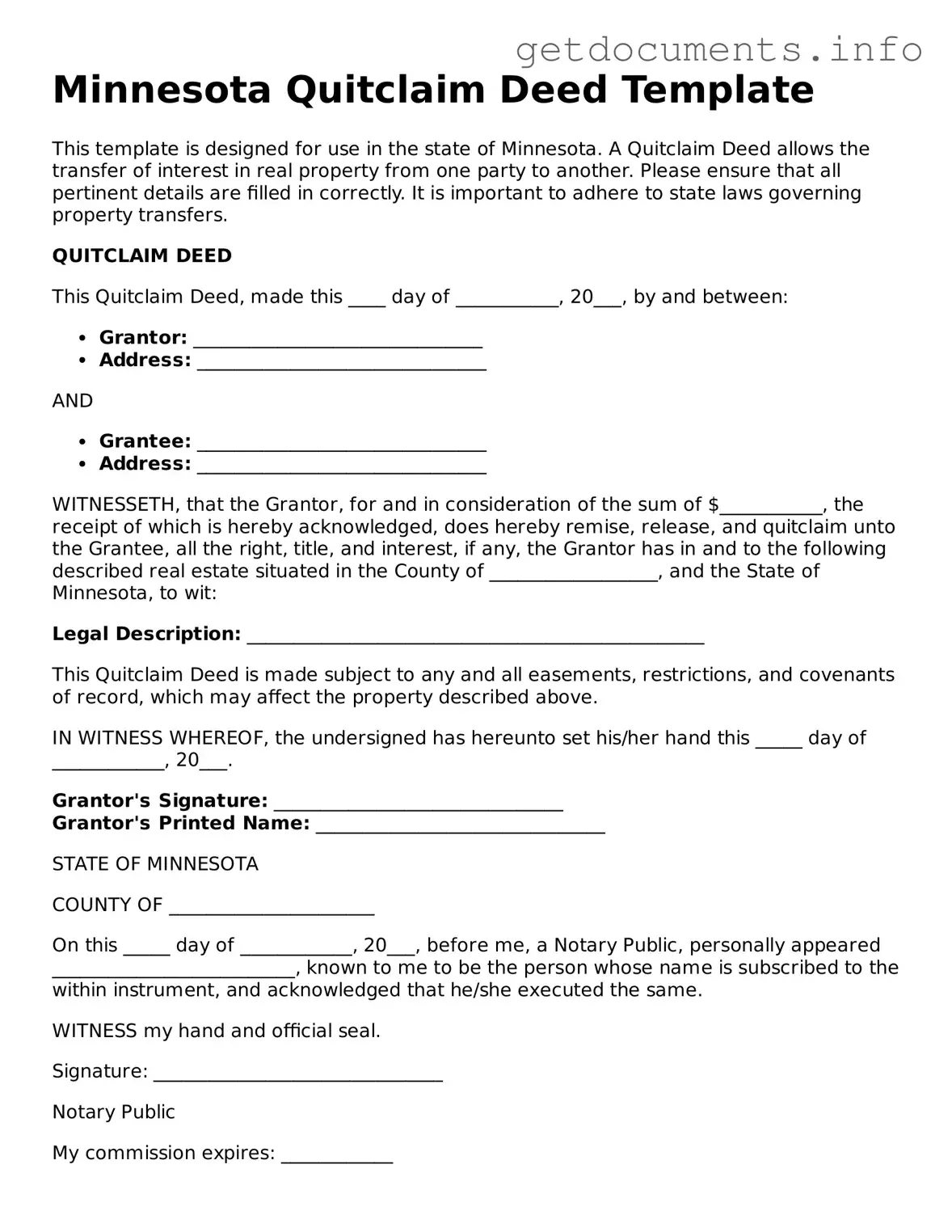The Minnesota Quitclaim Deed form serves as a crucial legal instrument for transferring property ownership between parties. This form is particularly valuable in situations where the granter, or the person transferring the property, wishes to convey their interest in real estate without making any guarantees about the title's validity. It is commonly used in various scenarios, including family transfers, divorce settlements, or when property is given as a gift. The document requires the inclusion of essential details such as the names of the granter and grantee, a legal description of the property, and the date of the transfer. Additionally, it must be signed by the granter in the presence of a notary public to ensure its legal enforceability. Understanding the implications of using a Quitclaim Deed is vital, as it does not protect the grantee against any potential claims or liens on the property. Therefore, while it offers a straightforward method for property transfer, both parties should consider the potential risks involved.
